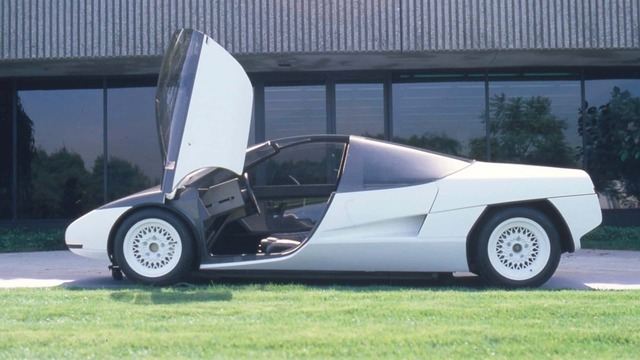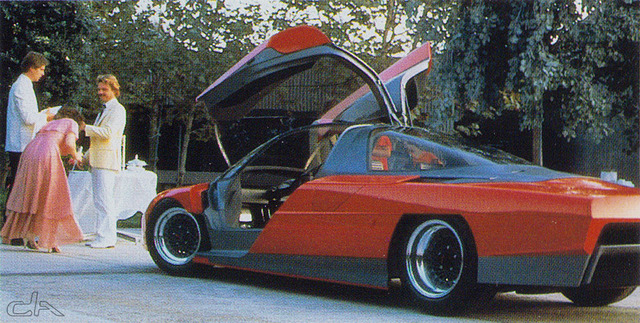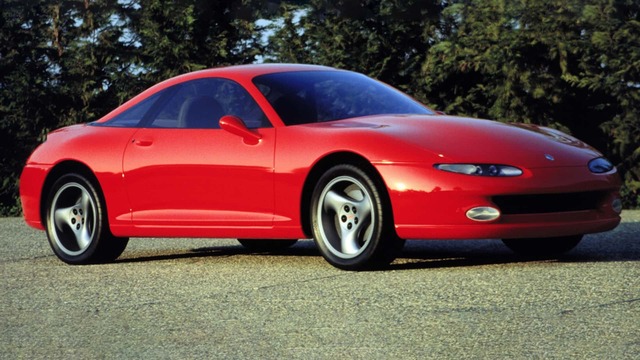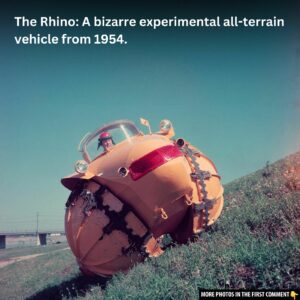In the world of concept cars, some designs fade into obscurity, while others spark curiosity and admiration decades later. The Toyota MX-2 Concept belongs to the latter—an audacious mid-engine supercar that could have redefined Toyota’s sports car legacy. Developed in secrecy during the 1980s by Calty Design Research, this futuristic machine never made it past the prototype stage, yet it showcased bold engineering, cutting-edge aerodynamics, and a vision ahead of its time. Had it reached production, it might have rivaled the Acura NSX and set a new standard for Japanese performance cars. So why was it locked away, and what made it so special? Let’s explore the forgotten legend of the MX-2.
The Birth of the MX-2: A Follow-up to the MX-1
Before the MX-2, there was the Toyota MX-1 Concept, a mid-engine prototype introduced in 1982. The MX-1 set the foundation for what could have been Toyota’s entry into the high-performance supercar market. Featuring scissor-style doors and a futuristic design, the MX-1 showcased Toyota’s willingness to push boundaries.

Following the success of the MX-1 as a full-scale prototype, Toyota’s Calty Design Research team, based in California, began work on the MX-2. The studio was Toyota’s first design facility outside Japan, and it was created to break free from the conservative and cost-focused mindset of Toyota’s headquarters. In 1983, their efforts resulted in the Toyota MX-2, a car that took everything the MX-1 introduced and elevated it to a new level.
Unlike the MX-1, which was just a prototype, the MX-2 was physically built and tested. This concept was designed to be a halo car, a flagship sports car that would rival the best supercars of the era. Had it entered production, it might have been Toyota’s answer to Ferrari, Porsche, and even the Acura NSX.
Video
Check out this video on the Toyota MX-2 Concept, where we unveil an unseen supercar. Watch to discover what makes this car truly groundbreaking!
Design and Engineering: A Concept Ahead of Its Time
The Toyota MX-2 was unlike anything Toyota had ever built. It was designed as a two-seater mid-engine coupe, prioritizing aerodynamics, speed, and futuristic aesthetics.

Innovative Features That Stood Out:
- Gullwing Doors & Liftable Rear Canopy: Unlike conventional doors, the MX-2 had forward-hinged gullwing doors, giving it a dramatic and exotic look. The rear canopy could be lifted, allowing easy access to the engine.
- Fiberglass-Reinforced Plastic (FRP) Body: The MX-2 featured a lightweight FRP body, making it agile and responsive while maintaining structural strength.
- Swing Arm Steering Wheel: Toyota designed the steering wheel in such a way that it could easily accommodate both left- and right-hand drive configurations, making the car adaptable for global markets.
- Aerodynamic Efficiency: The sleek, curved body and low stance gave the MX-2 a superior aerodynamic profile, reducing drag and enhancing speed.
While Toyota never disclosed official performance figures, the MX-2 was expected to be powerful and fast, positioned to compete with contemporary supercars like the Honda NSX and Porsche 911.

A Rival to the Acura NSX That Never Came to Be
It’s impossible to look at the Toyota MX-2 and not compare it to the Acura NSX, which debuted in 1990. The similarities were striking: both were mid-engine sports cars, both prioritized lightweight construction, and both aimed to be affordable alternatives to Ferrari and Porsche.
However, the MX-2 came first. Had Toyota pushed it into production in the late 1980s, it could have beaten the NSX to market and potentially established Toyota as a serious supercar contender years before the Supra MK4 gained legendary status.
But, despite its potential, the MX-2 never made it past the prototype stage.
Calty’s Freedom to Innovate
One of the key reasons the MX-2 existed in the first place was the unprecedented creative freedom at Calty Design Research. Unlike Toyota’s Japan-based studios, which were known for their rigid corporate structure and cost-conscious approach, Calty had the freedom to dream big.
This California-based design studio was responsible for some of Toyota’s most daring ideas, including the Toyota FJ Cruiser and various futuristic concept cars. The MX-2 was another bold experiment, showcasing what Toyota could achieve when given free rein.
Why the MX-2 Never Reached Production
Despite its impressive design and supercar potential, the MX-2 was ultimately shelved. There were several reasons for this:
- A Crowded Sports Car Market: At the time, Toyota was already developing the first-generation MR2 and the second-generation Supra. Introducing another mid-engine sports car might have cannibalized sales.
- Financial and Business Decisions: Developing a low-volume supercar is expensive, and Toyota’s priorities were more mainstream performance cars rather than niche high-end models.
- Toyota’s Conservative Leadership: Toyota’s executives in Japan were traditionally cautious, focusing on reliability and mass-market appeal. A risky, high-performance sports car didn’t fit their strategy at the time.
As a result, the MX-2 was locked away, never to be seen again—until Toyota’s 50th-anniversary celebration of Calty Design Research finally brought it back into the spotlight.
Legacy and Influence on Future Toyota Models

Although the MX-2 never made it to production, its design philosophy and engineering concepts influenced future Toyota sports cars.
- The Toyota MR2 (1984) carried the mid-engine layout into production.
- The Toyota Supra MK4 (1993) followed a high-performance philosophy, setting new standards for Toyota sports cars.
- The Toyota FT-1 Concept (2014) was another Calty-designed supercar, which eventually inspired the modern GR Supra.
The MX-2 remains a what-if scenario in Toyota’s history—a car that could have changed the company’s performance car trajectory had it been given the green light.
A Glimpse Into the Future: Could an MX-2 Revival Happen?
With Toyota now investing in high-performance hybrid and electric vehicles, could we see a modern version of the MX-2?
Some industry experts believe that Toyota’s renewed focus on performance cars, led by the GR division, could result in a revival of past concepts. With advancements in electric powertrains, Toyota could bring back a high-performance MX-2 successor—one that embraces modern technology while staying true to its mid-engine heritage.
If Toyota decides to bring back the MX-2, it would undoubtedly be a groundbreaking EV or hybrid supercar, blending Calty’s visionary design with next-generation performance technology.
Video
Check out this video on the 2019 Toyota Avalon, showing its journey from concept to reality. Watch to see how this stunning car came to life!
Conclusion: The One That Got Away
The Toyota MX-2 Concept is one of the greatest “what-if” cars in Toyota’s history. Designed as a futuristic supercar, it had all the elements to become Toyota’s NSX competitor.
However, due to business priorities, market conditions, and Toyota’s conservative approach, it remained just a concept—a forgotten chapter in Toyota’s sports car history.
But with Toyota’s recent commitment to high-performance vehicles and electrification, perhaps the spirit of the MX-2 will live on. Whether in the form of a GR-branded supercar or an EV revival, the dream of what the MX-2 could have been still lingers, waiting for its moment to shine.



